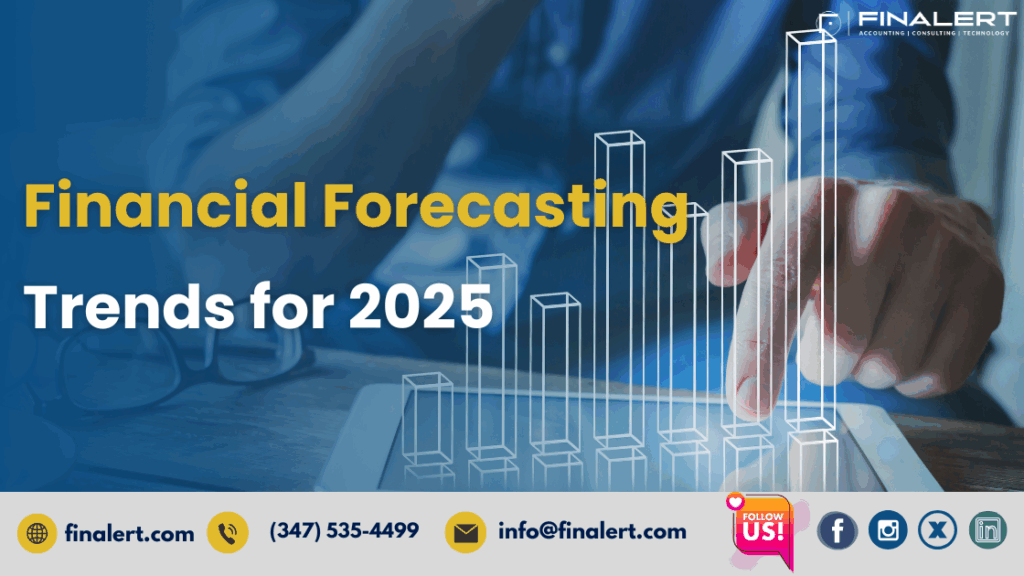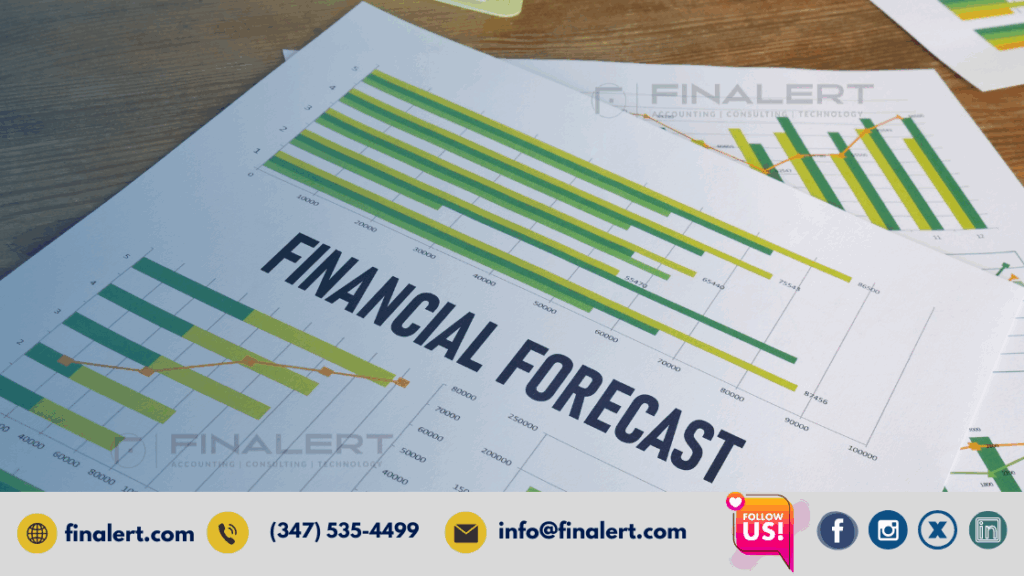
Financial forecasting has always been a vital component of strategic business planning. In 2025, however, the tools, assumptions, and processes behind forecasting are evolving rapidly. From economic uncertainty and rising interest rates to AI-powered predictive analytics, U.S. companies are rethinking how they approach their financial outlook.
Staying ahead in today’s volatile market demands a shift from static annual projections to dynamic, real-time forecasting. Businesses that once relied on historical data alone are now embracing agile financial models, scenario planning, and digital dashboards that adapt to new information instantly.
In this article, we’ll explore the most important financial forecasting trends for 2025, with practical insights for business owners looking to build more resilient, data-driven strategies.
Traditional forecasting often involved building projections once or twice a year, based on past performance and assumptions that rarely changed. In 2025, this model is considered too slow and rigid. Businesses are now implementing rolling forecasts, which are updated monthly or quarterly based on real-time inputs such as sales trends, economic indicators, and supply chain shifts.
Benefits of Real-Time Forecasting:
Modern forecasting tools combine budgeting, forecasting, and reporting in a single platform. This helps companies move away from siloed spreadsheets and toward Integrated FP&A, where finance teams can collaborate with operations, sales, and HR to produce more accurate projections.
AI and machine learning are increasingly being embedded into forecasting software. These technologies analyze massive amounts of historical and real-time data to uncover patterns humans might miss. In 2025, U.S. companies are using AI to predict everything from sales demand and customer churn to expense anomalies and cash flow dips.
AI doesn’t replace financial professionals, it empowers them with better insights. CFOs and finance leads are spending more time interpreting machine-generated forecasts and less time building them from scratch.
With interest rates, inflation, and regulatory changes all in flux, U.S. businesses are realizing that one forecast is not enough. Scenario planning—building multiple forecasts based on different potential futures—is becoming the standard.
Businesses that use scenario planning are more resilient when conditions change suddenly and better prepared to seize new opportunities.
Rising interest rates and tighter access to credit make cash flow forecasting more critical than ever. Investors and lenders want to see that businesses have a handle on their working capital needs, debt service obligations, and upcoming capital expenditures.
Proper cash flow forecasting helps businesses anticipate shortages and avoid missed payroll or loan defaults.

In 2025, shifts in consumer expectations, such as demand for instant delivery, personalized services, and ethical business practices, make revenue forecasting harder. E-commerce and subscription models add further complexity with recurring and usage-based billing.
CRM tools and customer data platforms now feed directly into revenue models, helping businesses track pipeline movement and customer engagement in real time.
Best Practices:
Talent shortages, hybrid work, and increasing wages have made labor cost forecasting more difficult—and more important. Whether you’re planning headcount, hiring contractors, or analyzing benefits spend, your forecasts must account for market volatility and internal workforce shifts.
Forecasting labor costs should be part of your broader operational planning—not just a finance task.
Environmental, Social, and Governance (ESG) metrics are increasingly influencing investment, procurement, and regulatory decisions. In 2025, large and midsize U.S. companies may need to forecast carbon emissions, sustainability goals, and compliance costs.
Forecasting ESG Costs Might Include:
Finance leaders are building ESG metrics into their broader forecasting models to prepare for new reporting requirements and investor scrutiny.
With forecasting becoming more complex, small and midsize companies are increasingly hiring Fractional CFOs or outsourcing their financial planning and analysis to firms that specialize in real-time, data-driven forecasting.
This allows them to:
Outsourced forecasting is no longer seen as a luxury; it’s becoming a smart, scalable solution for growth-minded businesses.
Don’t just adopt tools for the sake of it. Use forecasting software that aligns with your business size and goals. Make sure the data feeding into your forecasts is clean, current, and complete.
The best forecasts come from shared input. Work with operations, marketing, HR, and leadership to make sure all assumptions are aligned.
Set a cadence for reviewing and updating your forecasts monthly or quarterly, depending on business size and volatility.
Make sure your forecasts are actionable. Tie them to specific performance metrics such as revenue per employee, EBITDA margin, or net income targets.
Don’t overcommit to a single projection. Keep your scenario models updated and ready to deploy.
Financial forecasting in 2025 is no longer about predicting the future with certainty—it’s about preparing for multiple possible outcomes with flexibility, insight, and speed. From real-time data and AI-powered modeling to scenario planning and ESG integration, the landscape has shifted permanently. Businesses that adopt modern forecasting methods will make more informed decisions, respond more quickly to disruptions, and mitigate financial risk more effectively.
Whether you’re a startup founder, an operations lead at a midsize company, or a corporate CFO, the ability to forecast well has become a competitive advantage in itself. And in a year as dynamic as 2025, agility isn’t just useful, it’s essential.
Similar Articles
No results available
Get in touch with Finalert today for tailored business solutions!
No results available
Ready to thrive? Connect with Finalert today and let’s succeed together in the dynamic global market.
© 2025 Finalert. All rights reserved.
Ready to thrive in the dynamic global market? Finalert LLC offers expert financial services, including accounting, consulting, and technology solutions, tailored to your business needs.
Address
Accounting
Quick Links
Consulting
Industries
© 2025 Finalert LLC. All rights reserved.